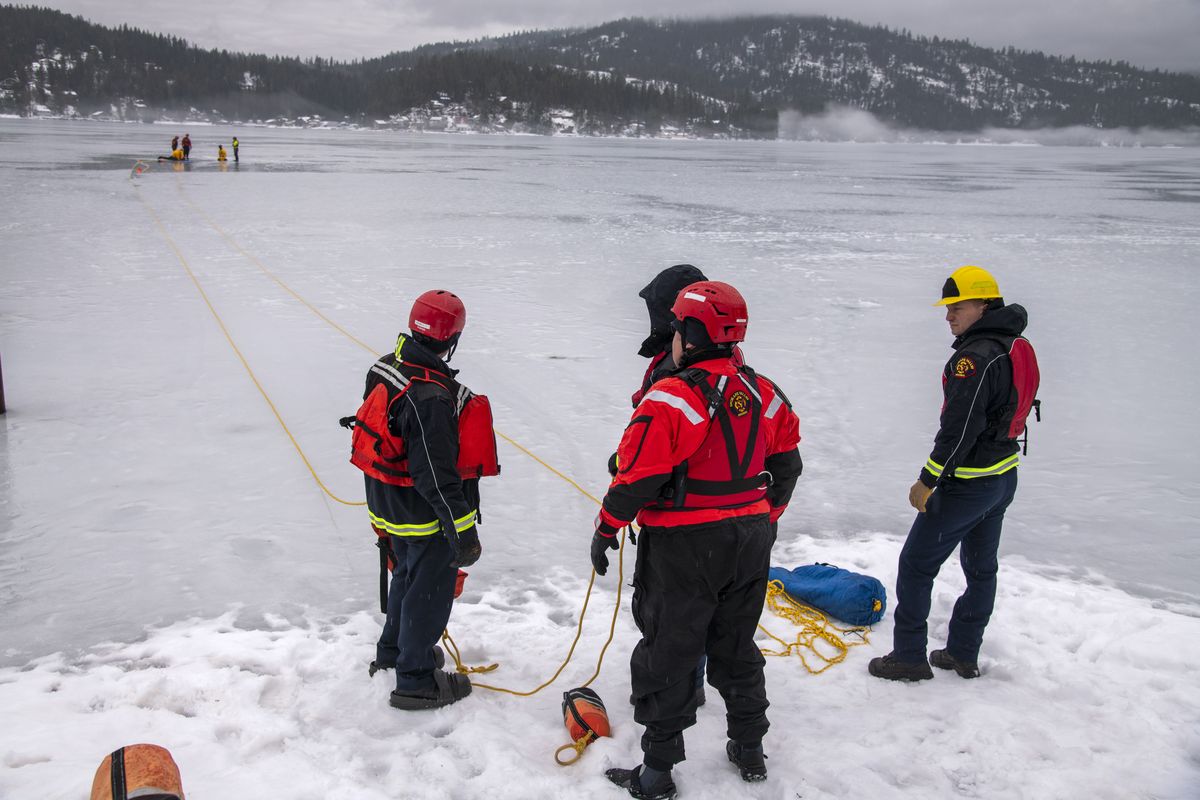Spokane Valley firefighters use frigid temperatures to train for ice rescues on Newman Lake

The ice over Newman Lake last week created an ideal setting for the Spokane Valley Fire Department to refresh firefighters on ice rescues.
The ice rescue trainings happen each year to update first responders’ certifications that roll over every 18 months, said Craig Warzon, public information officer with the Spokane Valley Fire Department. The department held their event Wednesday.
“We classify this as … a low-frequency, high-risk event. It doesn’t happen very often, but the consequences are severe,” Warzon said. “So that’s why it’s so important to train on these type of events when we can.”
In December, Spokane firefighters rescued a 19-year-old man who fell through the ice at Fish Lake near Cheney.
The trainees come from crews closest to the Liberty Lake jurisdictions, Warzon said.
The first part of the session includes a classroom course, where they refresh techniques, and then they head to the lake.
“We go through and do the routine of getting a rope around the deck, and how to approach the victim, how to talk to him and kind of coach them through that piece,” said Mike Patterson, a Valley department firefighter and instructor.
At the lake, the trainees tethered a rope to the ice-covered shore of Newman Lake and then used ice screws to tether it again halfway through.

Warzon said they were able to add on to the scenario and do a full session this year because recent frigid weather made Newman Lake thicker and easier to walk on than usual.
One scenario trainees had to deal with involved a fully submerged dummy who had to be found and rescued with a rope.
Then trainees had to rescue a person half-submerged, which involves different rescue techniques, Warzon said.
Each year offers the department an opportunity to tweak its rescue protocols, Patterson said.
“It’s all theoretical until you get out on the ice and get to try things hands- on to see what will work,” Patterson said.
Ice rescues often happen when someone goes after a pet who ventured on to the ice or fell through it, Warzon said. A woman died doing that on Lake Coeur d’Alene last winter.
If a pet does wander, Warzon said to call 911 immediately and not to go after them.
“If it can’t support a 40- to 50-pound animal, it won’t be able to support a person,” Warzon said.
Warzon said people should be aware of the thickness of the ice before they consider going on to it.
Ice that’s 2 inches or thinner should be avoided. For ice fishing and walking, the thickness should be more than 4 inches.
Six inches is safe for snowmobiles or four-wheelers, Warzon said, and 8 inches is suitable for lightweight vehicles.
Warzon said falling through the ice is relatively rare, but if it happens, people should try to calm their heart rate as they face a high chance of going into shock.
Then they should start kicking as if trying to swim, Warzon said.
“The cold shock saps your energy, you know, and you’re panicky,” Warzon said. “Just try to calm yourself down and conserve energy.”